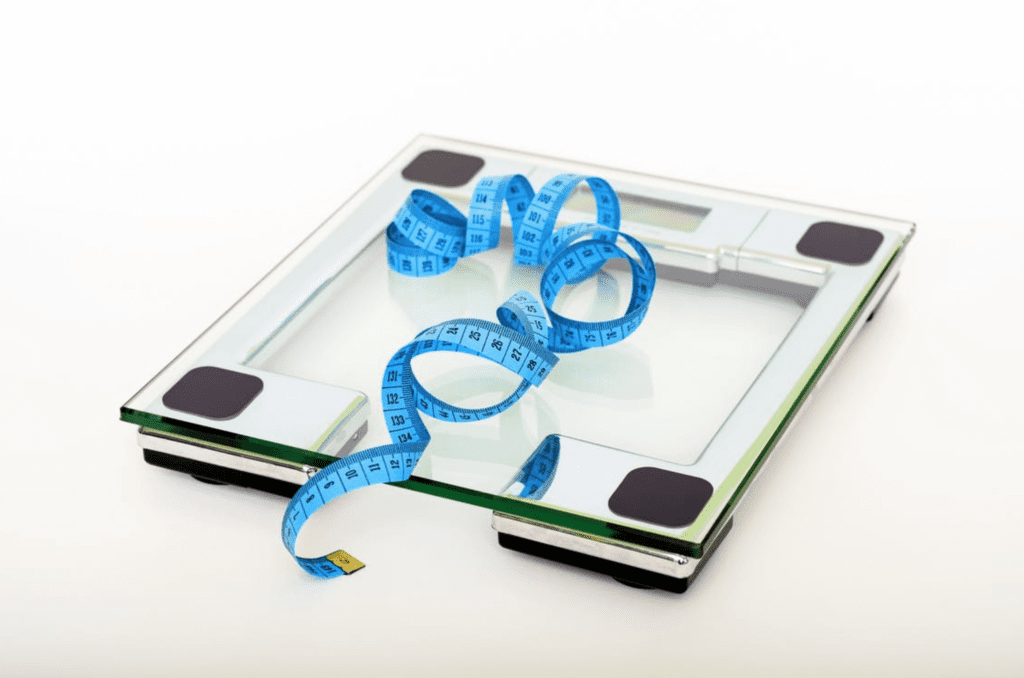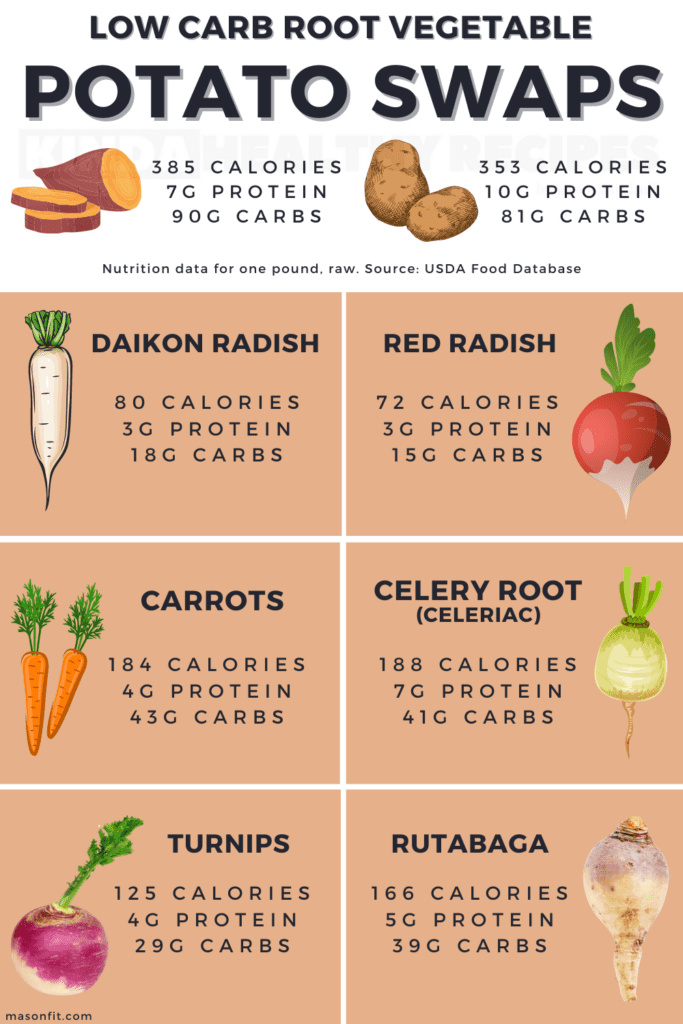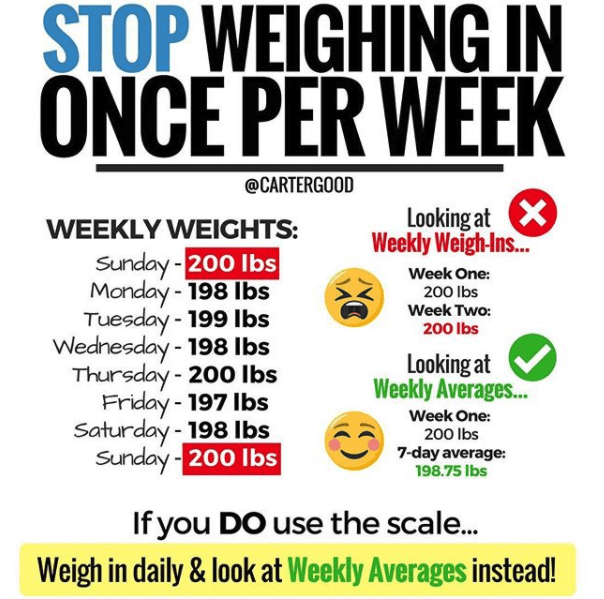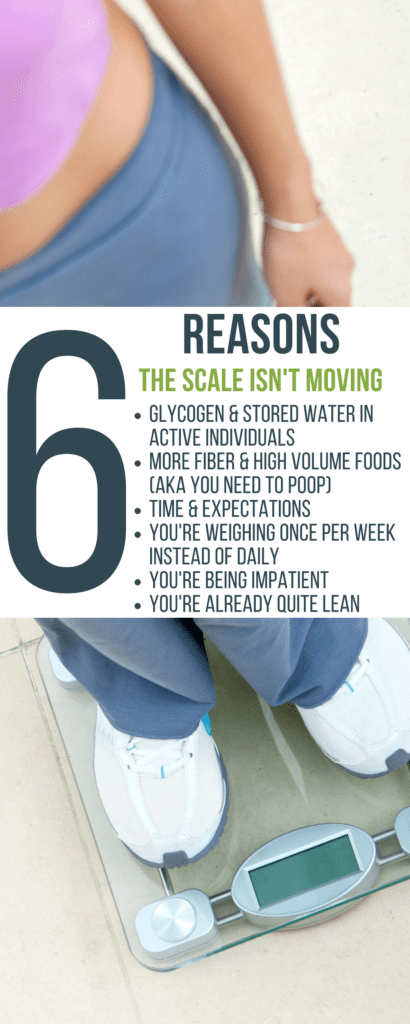You started a diet and have been eating better, exercising, drinking more water, and doing all the right things for a few weeks. Yet, the scale isn’t moving and you’re growing more frustrated by the day. And you begin to think:
“Maybe I’m not destined to be fitter, leaner, or healthier.”
“Maybe it’s my genetics, my age, or some other unknown issue with my innards.”
“I’ll Google why I can’t lose weight and possible disorders. WedMD says I have either stage 4 lymphoma or Hashimoto’s Disease.”
“Maybe I DO have to buy that product Nancy keeps inboxing me about to get results.”
“….because whatever I’m doing is not working.”
If any of the above rings a bell don’t worry, you’re not alone. This happens to nearly 100% of people in the beginning stages of a fat loss diet or fitness journey. Waiting for noticeable changes to occur can be frustrating. And questioning your strategy when there are so many options out there is completely natural.
I’m here to tell you to first, chill out, and second, how a few things may be causing the scale to stall or even increase in the early stages of your diet or training program. Let’s take a look.

1. Glycogen and Stored Carbohydrates in Active Individuals
It may happen through several different mechanisms, but one of the most common reasons could be related to your muscles. While gaining muscle takes longer than you’d think, when you begin strength training your body stores more glycogen (stored carbohydrates) in the now active tissue for recovery and fuel. With that extra glycogen, however, comes water.
For every gram of glycogen that is stored, 3 grams of water is stored along with it.
This means that when you begin strength training you will likely begin storing more water weight, causing a slight increase in body weight. You may also experience short-term measurement increases as well. In the thigh, for instance, the muscle may appear fuller and larger with the added glycogen and water. While these differences are typically small, the larger the muscle becomes or the more advanced you are as a trainee could lead to noticeable differences.
Supplements like creatine could also lead to storing more intracellular water and retaining some water weight.
In both cases, this is a good thing. It’s important to differentiate between storing more water weight and gaining weight. When most people talk about gaining weight, they’re thinking of gaining body fat. Remember, body weight does not equal body fat.
2. Changes to Your Diet & Nutrition
Another possibility could be the dietary changes that coincide with a new fitness routine or fat loss diet. If you were eating a highly processed diet or lots of simple sugars and easy to digest foods before, and you swapped in high-volume vegetables, fruits, lean meats, and unprocessed foods – you could weigh more based simply on the volume of food. Most unprocessed, healthier choices contain will take longer to digest thanks to things like fiber and complex chemical structures.
In addition to food changes, most will increase water consumption in the early stages. You’ll eliminate excess water through urine, sweating, and increased respiration rates during exercise. But if you weighed yourself in a dehydrated state, your hydrated state will weigh more, all things being equal.
Tips for Adding Volume to Your Diet
If you’re looking to increase the volume of your diet (more food, fewer calories), check out some of my high volume recipes:
- chicken dan dan noodles
- spicy beef vegetable soup
- chicken shepherd’s pie
- ground beef fried rice
- harissa honey chicken bowls
- Greek chicken and rice skillet
Vegetables are king when it comes to adding volume. If you are veggie resistant, one of my favorite hacks is to start with substitutes for one of the most beloved starches out there—potatoes. Check out my guide to low carb potato replacements for 9 veggies that can be used to make everything you’d make with taters.

3. Time & Expectations
Okay, I lied about the glycogen being the most common reason for scale weight not moving. In reality, it’s that you haven’t given yourself enough time. You must realize that it takes time for noticeable changes to occur. Losing weight or body fat at a healthy, sustainable rate takes time.
Using the 1-2% per week of body weight recommendation, losing 1 pound of body fat per week is a great success. That does mean, however, that you’ll only lose 4 pounds of fat in the first month. If you add in the potential weight increases from storing glycogen and dietary changes, you may not see the scale move at all.
This can be discouraging, but it’s important to realize that losing body fat, not weight, is the ultimate goal. And losing body fat can, will, and almost always does occur without body weight changing linearly.
Something else to keep in mind is your long-term goal, which probably looks something like aging well and maintaining independence late into life. Short-term goals can be great daily motivators, but it’s important to not let them overshadow the aforementioned ultimate goal.
To achieve the ultimate goal, lifestyle changes and engraining long-lasting habits will be key. Making consistent, small changes week to week and month to month will eventually compound into something great. Keeping your eye on the end game will also assist in avoiding relapses or yo-yo dieting. It may sound cliche, but your health and fitness is a marathon – not a sprint.
4. You’re Weighing Once per Week
I’ve come around on this point in the past year. Before then, I was adamant about not weighing yourself all the time, especially not daily. Because the truth is, being that concerned about body weight can be unhealthy. And when you add in other factors that make up your health and fitness beyond scale weight, it’s clear that weight can be misleading and inaccurate in many cases.
That being said, if body weight is your number one data point, let’s be sure to track it as accurately as possible. I love the following graphic from Carter Good that shows how misleading the one-time per week weigh in can be. As long as you don’t become obsessive about the scale and let it affect your daily life or mood, weighing daily is a great way to paint a more accurate picture.

5. Patience & Trust
Once you come to terms with the slow paced nature of fat loss, the next step is to remain patient. You can’t rush it or speed it up, no matter what you read online. If I could leave you with one thing it would be to find something that’s working for you and then never read, listen, or watch another thing about fat loss or fitness until your progress stalls.
And by progress stalling I mean you have plateaued in body weight, body measurements, performance metrics in your training, and have genuinely stalled in all areas for more than 2-3 weeks. At that point, it’s time to reassess what you’re doing. I’ll even take it a step further and say that anything will work for you as long as its core principles are sound and you remain adherent.
Pick something you can believe in and adhere to for the long-term (that’s an important part) and stick to it with full belief and trust. Fat loss will occur.
6. You’re Already Quite Lean
In my article about what’s required to reach fitness model body fat levels, I talk about how difficult it is to make progress once you cross a certain body fat or body weight threshold. Quite simply, the leaner you get, the slower progress will be, and your scale may eventually stop moving altogether. This is why it’s essential to track other metrics like body measurements, body fat percentage, and performance. You may be improving in every other area except the scale.
Bonus Point #7
Once you’ve checked all of the above off the list, there’s a good chance you’re dealing with one of the most common weight loss issues — you’re not losing weight. Everything above can happen in the early stages of a weight loss phase but eventually, a regression to the mean occurs. If you have been dieting and exercising for several weeks, and you haven’t seen progress in weight, measurements, or any data points, you’re not making progress.
It could be that you’re eating more and have an increased appetite from exercise, you’re not eating as little as you thought, or maybe you’re eating better foods that have more calories than you were eating before. A good example of this would be starting a ketogenic diet or high fat protocol where the foods are very calorie dense. If you were eating 1,500 calories from hamburgers before and switch to 1,500 calories of eggs, butter, meat, and broccoli, you’re going to stay the same weight (for the most part).
Give yourself time to make progress but there comes a time when you have to take an honest look at what you’re doing and consider a course correction if need be. If you decided to tiptoe into macro counting, check out this free macro calculator from a company I’m an investor in, Counter.

